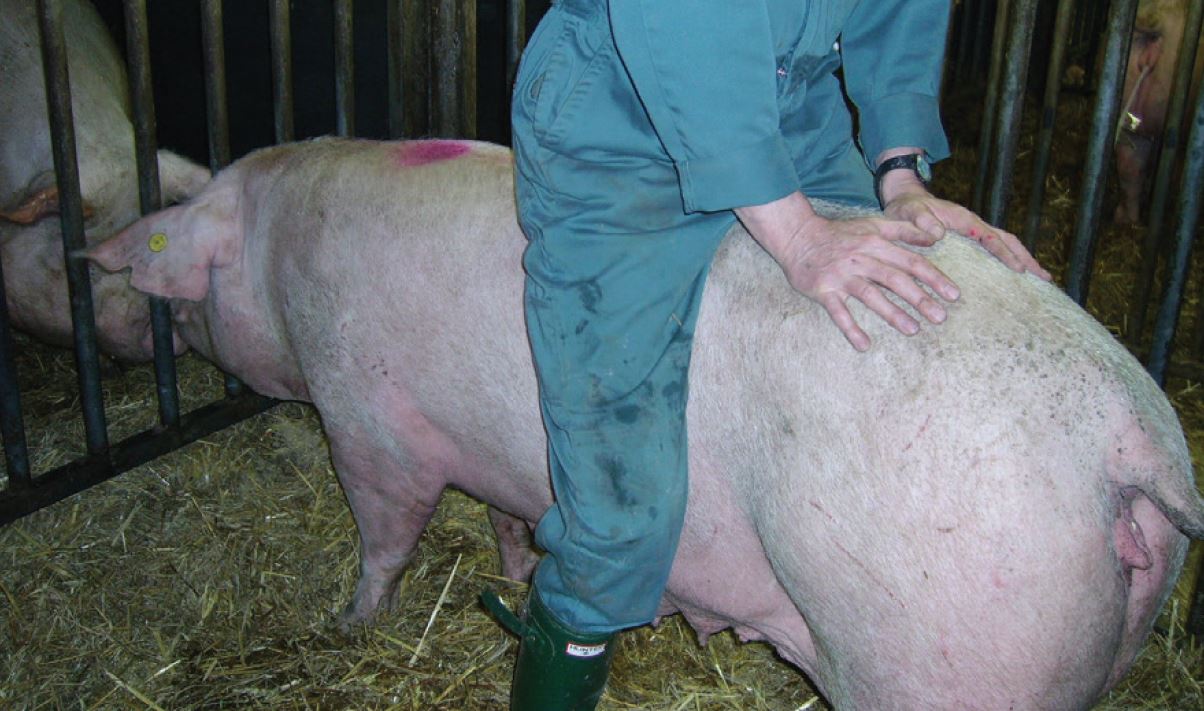Heat detection in pigs
Accurate heat detection is essential for the correct timing of insemination. Use this information to ensure good timing, successful insemination and improved reproductive performance.
Heat detection tips for success
It is important to take your time and know your pigs.
Not all signs of heat are exhibited in any one female, and response to boar contact can vary.
Knowing your pigs will help you to recognise signs and take appropriate action to accurately detect the onset of oestrus.
To ensure success, remember the following:
- Always approach your pigs calmly and avoid interrupting their normal behaviour
- Allow time to observe their true behaviour
- Allow reaction to your presence to subside
- Many females respond instantly to boar presence, while others take a few minutes
- Some females may only exhibit a standing reflex for the boar with which they have had the most contact
- Be patient and do not be afraid to develop a bond
Preparing gilts for service
Outdoor
Indoor
Signs of coming into heat
If possible, look for signs of coming into heat twice a day, allowing for at least seven hours between checks.
The first signal to watch for is the proestrus period, which occurs just before oestrus and lasts about one day. Identifying proestrus helps to predict the timing of standing heat and insemination.
Check for some, or all of these signs:
- Back end – Swollen, red vulva (more notable in gilts than sows), watery discharge from vulva, clitoris flat and pale pink, becoming more prominent
- Activity – Restless, climbing up gates and walls, mounting other females but not standing themselves, increasing interest in the boar
- Sounds – High-pitched whining
Signs of standing heat
Standing heat is when the sow/gilt is receptive and will stand for mating/service. Accurately identifying the start of first standing heat is essential for successful insemination.
The oestrus period can last for between 1–3 days, with ovulation often occurring late on the second day of standing heat.
Check for some or all of these signs:
- Back end – Vulva appears normal (swelling and redness subsides), sticky discharge from vulva, clitoris red and protruding, tail upright while standing, and flicks up and down
- Activity – Poor appetite, pricked ears, standing with an arched back, glazed eyes, trembling, attracted to stockperson, seeking boar contact (if allowed), standing rigid if mounted
- Sounds – Vocal with repeated grunts or long growls
Test for a standing reflex (the best indicator)
Check twice daily if possible, allowing at least seven hours between checks.
Apply pressure to the back and flanks of the female pig; do this at the same time as renewed boar presence.
Receptive females will stand rigid and ears often prick up.

Pregnancy checking
There are several ways to check if a pig is pregnant, including observing signs of sows coming into heat and returns to service, as detailed above.
You can also use ultrasound scanning to check for pregnancy, which creates images of the developing embryos.
The best time to scan a pig for pregnancy is 28–35 days after insemination.
On an ultrasound scan, fluid appears black and the uterus appears white, making it easy to identify any fluid-filled pockets as well as any sows that are not in pig.
Note of caution: If you can only see one large, round black area on the scan, you may be visualising the bladder rather than embryonic sacs.

